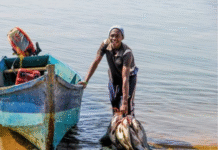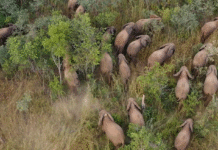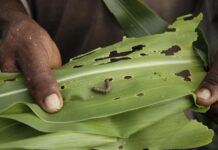Illustrative Image: Reviving the Fight Against Heavy Metal Contamination in Groundwater: Urgent Global Call Amid Rise of Emerging Pollutants
Image Source & Credit: NU Aqua
Ownership and Usage Policy
A recent study by Umeh et al. (2025) titled “A review of the sidelined pollutant: Reviving the fight against heavy metal contamination in an era of emerging contaminants” published in Toxicology Reports reveals that despite the growing research focus on emerging pollutants such as microplastics (MPs) and per- and polyfluoroalkyl substances (PFAS), heavy metals—due to their persistence, toxicity, and widespread presence—continue to pose a substantial and underappreciated threat to public health and environmental sustainability.
“
Heavy metal contamination in groundwater remains a critical, underrecognized threat, demanding renewed global attention, updated technologies, and urgent policy action.
– Umeh et al. 2025
This review paper delivers a compelling and urgent call to action, drawing attention to the critically overlooked issue of heavy metal (HM) contamination in groundwater. Despite the growing research focus on emerging pollutants such as microplastics (MPs) and per- and polyfluoroalkyl substances (PFAS), heavy metals—due to their persistence, toxicity, and widespread presence—continue to pose a substantial and underappreciated threat to public health and environmental sustainability.
The review aims to (1) reignite global awareness of HM pollution in groundwater systems, (2) highlight research gaps and the underexplored risks of heavy metals in contrast to newer contaminants, and (3) provide a comprehensive analysis of current knowledge surrounding HM sources, pathways, detection, toxicity, and remediation efforts.Currently, over two billion people globally depend on groundwater for their daily needs—yet many water delivery systems still rely on outdated infrastructure that leaches lead and other hazardous metals. This review is more than a scientific summary; it’s a critical reminder that heavy metals remain a profound and ongoing environmental hazard. The authors urge policymakers, researchers, and engineers to prioritize heavy metal pollution with the same urgency as emerging contaminants—adopting smarter, more sustainable strategies for monitoring, remediation, and long-term protection of groundwater resources.
How the Study was Conducted
This study employed a structured literature review methodology, prioritizing a systematic analysis of existing research over experimental or field-based investigations. A total of 227 peer-reviewed papers were carefully selected and examined, primarily sourced from established scientific databases such as Elsevier, Nature, Springer, and Web of Science. To ensure a thorough and focused review, the authors developed a targeted search strategy using a combination of specific keywords, including “groundwater”, “heavy metals”, “sources”, “models”, “transport”, “fate”, “toxicity”, “global trends”, “sustainability”, and “treatment”. These terms were combined in various ways to capture a wide breadth of relevant literature on the subject. The scope of the review was deliberately confined to heavy metal contamination in groundwater systems. Broader environmental matrices such as soil, air, and surface water were excluded from the analysis, though the authors acknowledged that integrating these additional perspectives would be beneficial for a more holistic understanding of heavy metal pollution. One limitation noted was the reliance solely on a select group of databases; other sources and search engines were not utilized, leaving room for potential insights that might exist outside of the reviewed platforms.
What the Authors Found
Despite declining research attention, heavy metal (HM) contamination in groundwater remains a widespread, unresolved, and dangerous public health threat, with global hotspots, significant health risks, and major gaps in treatment technologies, monitoring standards, and pollutant interaction studies—highlighting the urgent need for renewed global focus and coordinated action.
Why is this important
1. Heavy Metals in Groundwater Threaten Human Health
Over 2 billion people rely on groundwater, often exposed to toxic levels of lead, arsenic, cadmium, and mercury—linked to cancer, organ damage, and developmental issues, particularly in children.
2. Environmental Harm Is Deep and Long-Lasting
Heavy metals persist in ecosystems for centuries, disrupting soil chemistry and harming plant and animal life. Once they enter aquifers, removal is extremely difficult.
3. Research Is Declining at the Wrong Time
Since 2022, studies on heavy metal contamination have dropped, as global focus shifts to newer pollutants like microplastics and PFAS—creating a dangerous illusion that the HM problem is solved.
4. Technology and Monitoring Are Lagging
Current detection and sampling methods are outdated and inconsistent. Advanced tools such as biosensors and nanotechnology exist but remain underused in real-world monitoring.
5. Public Awareness and Policy Are Failing
Without reliable data and innovation, policies remain weak. Public misconceptions lead to underfunding and inaction—leaving communities vulnerable to an ongoing, underestimated threat.
What the Authors Recommended
- The authors advocate standardising protocols globally and adopting advanced technologies like biosensors, nanotech, and smart sensors to improve accuracy, speed, and field-based testing of heavy metals in groundwater.
- The authors urge reinvestment in long-term studies on heavy metals, especially their interactions with pollutants like PFAS and microplastics, and examination of their behavior in diverse geological and climatic settings.
- Update water safety regulations to address mixed contaminant risks, phase out hazardous legacy infrastructure like lead pipes, and foster stronger collaboration between scientists, policymakers, and utilities.
- Furthermore, correct the misconception that HM threats are over by launching education campaigns, supporting community-based water monitoring, and improving communication about health risks and solutions.
- In addition, support the development of cost-effective, eco-friendly tools, automated microfluidic systems, and integrated platforms that can detect multiple contaminants (HMs, MPs, PFAS) in real time.
In conclusion, the study by Umeh et al. (2025) serves as a critical wake-up call to scientists, policymakers, and the global community: heavy metal contamination in groundwater remains a persistent and dangerous threat that cannot be sidelined. As the world turns its attention to emerging pollutants, it is vital not to abandon the fight against heavy metals, whose long-lasting health and environmental consequences continue to endanger billions. Renewed investment in advanced detection technologies, stronger regulations, public education, and collaborative research is essential to safeguard groundwater resources and ensure a healthier, more sustainable future.
















 The African Research (AR) Index is a comprehensive scholarly directory and database focused explicitly on journal publishers that publish and disseminate African research.
The African Research (AR) Index is a comprehensive scholarly directory and database focused explicitly on journal publishers that publish and disseminate African research.

